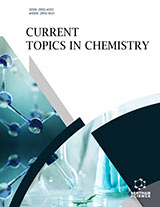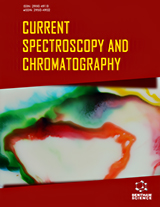Abstract
Hydromorphone, a semi-synthetic derivative of morphine, is being used in the treatment of moderate to severe cancer-related and post-operative pain. It is also one of the most commonly prescribed drug that is often abused. Hence, its detection in biological samples and tissues is important for legal and therapeutic reasons. The purpose of this review is to give a brief description of the various non-chromatographic and chromatographic analytical techniques, namely immunoassays, thin layer chromatography, high performance liquid chromatography, liquid chromatography/mass spectrometry, gas chromatography/mass spectrometry and capillary electrochromatography, that have been used by analysts to assay hydromorphone from the early 1970s to present. This review aims to help the analytical community make efficient choices between various analytical methodologies based on concrete parameters of reliability, sensitivity, specificity, precision, accuracy, cost and potential for automation.
Keywords: Hydromorphone, Radioimmunoassay (RIA), Thin layer chromatography (TLC), High performance liquid chromatography (HPLC), Liquid chromatography/mass spectrometry (LC/MS), Gas chromatography/mass spectrometry (GC/MS), Capillary electrochromatography (CEC)
Current Analytical Chemistry
Title: Hydromorphone: Analytical Methodologies for its Determination
Volume: 4 Issue: 2
Author(s): Maansi G. Kumar and Senshang Lin
Affiliation:
Keywords: Hydromorphone, Radioimmunoassay (RIA), Thin layer chromatography (TLC), High performance liquid chromatography (HPLC), Liquid chromatography/mass spectrometry (LC/MS), Gas chromatography/mass spectrometry (GC/MS), Capillary electrochromatography (CEC)
Abstract: Hydromorphone, a semi-synthetic derivative of morphine, is being used in the treatment of moderate to severe cancer-related and post-operative pain. It is also one of the most commonly prescribed drug that is often abused. Hence, its detection in biological samples and tissues is important for legal and therapeutic reasons. The purpose of this review is to give a brief description of the various non-chromatographic and chromatographic analytical techniques, namely immunoassays, thin layer chromatography, high performance liquid chromatography, liquid chromatography/mass spectrometry, gas chromatography/mass spectrometry and capillary electrochromatography, that have been used by analysts to assay hydromorphone from the early 1970s to present. This review aims to help the analytical community make efficient choices between various analytical methodologies based on concrete parameters of reliability, sensitivity, specificity, precision, accuracy, cost and potential for automation.
Export Options
About this article
Cite this article as:
Kumar G. Maansi and Lin Senshang, Hydromorphone: Analytical Methodologies for its Determination, Current Analytical Chemistry 2008; 4 (2) . https://dx.doi.org/10.2174/157341108784587812
| DOI https://dx.doi.org/10.2174/157341108784587812 |
Print ISSN 1573-4110 |
| Publisher Name Bentham Science Publisher |
Online ISSN 1875-6727 |
 2
2
- Author Guidelines
- Bentham Author Support Services (BASS)
- Graphical Abstracts
- Fabricating and Stating False Information
- Research Misconduct
- Post Publication Discussions and Corrections
- Publishing Ethics and Rectitude
- Increase Visibility of Your Article
- Archiving Policies
- Peer Review Workflow
- Order Your Article Before Print
- Promote Your Article
- Manuscript Transfer Facility
- Editorial Policies
- Allegations from Whistleblowers
- Announcements
Related Articles
-
Polypharmacy in Cardiovascular Medicine: Problems and Promises!
Cardiovascular & Hematological Agents in Medicinal Chemistry Single-dose Pharmacokinetics and Tolerability of Oral Delta-9- Tetrahydrocannabinol in Patients with Amyotrophic Lateral Sclerosis
Drug Metabolism Letters Brain Excitatory/Inhibitory Circuits Cross-Talking with Chromogranin A During Hypertensive and Hibernating States
Current Medicinal Chemistry A Walk in Nature: Sesquiterpene Lactones as Multi-Target Agents Involved in Inflammatory Pathways
Current Medicinal Chemistry Clinical Significance of the Blood Pressure Changes from Day to Night
Current Hypertension Reviews Simple and Efficient Synthesis of Novel bis-Betti Bases via a One-Pot Pseudo-Five-Component Reaction
Letters in Organic Chemistry New Physiological Targets Within the Kidney for Antihypertensive Therapy
Drug Design Reviews - Online (Discontinued) Translational Pharmacology in Aging Men with Benign Prostatic Hyperplasia: Molecular and Clinical Approaches to Alpha1-Adrenoceptors
Current Aging Science Current Concepts in SLE Thrombocytopenia: From Pathophysiology to Therapeutic Interventions
Current Rheumatology Reviews Postpartum Haemorrhage, A Persisting Killer Around the Globe, Road Ahead
Current Women`s Health Reviews Impact of Inhibitors of the Renin-Angiotensin-Aldosterone System on Liver Fibrosis and Portal Hypertension
Current Medicinal Chemistry The Vascular Endothelin System in Hypertension - Recent Patents and Discoveries
Recent Patents on Cardiovascular Drug Discovery Autoimmune Channelopathies of the Nervous System
Current Neuropharmacology Sympathetic Overactivity in Hypertension and Cardiovascular Disease
Current Vascular Pharmacology Antihypertensive Effect of Sesamin
Vascular Disease Prevention (Discontinued) Hyperglycemia and Perioperative Glucose Management
Current Pharmaceutical Design Novel Systemic Drugs for Cutaneous T-Cell Lymphoma
Recent Patents on Anti-Cancer Drug Discovery Echocardiographic Hemodynamic Monitoring in the Critically Ill Patient
Current Cardiology Reviews Endoplasmic Reticulum Stress and Atherosclerosis
Current Hypertension Reviews Corticosteroids in Sepsis: Pathophysiological Rationale and the Selection of Patients
Endocrine, Metabolic & Immune Disorders - Drug Targets


























